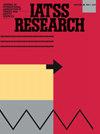司机道路风险的性别差异与性别平等政策:性别悖论?39个国家的比较分析
IF 3.3
Q3 TRANSPORTATION
引用次数: 0
摘要
性别是造成道路交通死亡的一个公认因素,男性在道路交通事故中死亡的可能性远远高于女性。本研究旨在确定司机自我报告的风险行为和心理社会因素的性别差异是否因国家性别平等政策而异。利用第三版道路使用者态度电子调查数据库,我们通过在线问卷调查分析了39个国家16031名经常驾驶的司机(54.46%为男性)在行为和态度上的性别差异。我们根据这些国家在世界经济论坛的全球性别差距指数及其四个分项指数(经济、教育、卫生和政治)上的水平来划分这些国家。我们分析了驾驶员性别、性别差距指数水平及其相互作用、报告行为、社会和个人可接受性、自我效能、风险感知、对道路安全政策的支持和感知威慑方面的差异,并控制了驾驶员年龄和国家收入水平。结果表明,无论所研究国家的性别平等程度如何,男性司机往往比女性司机有更危险的行为、态度和观念。他们还表明,性别平等政策似乎增加了样本中男性和女性司机的危险行为和态度。此外,更大的性别政策似乎并没有减少这些心理结构中的性别差异。特别是,经济、教育和卫生方面的高度平等似乎强化了与危险驾驶行为有关的态度和看法方面的性别差异。我们讨论这种性别悖论,因为性别刻板印象的本质化和安全文化对男性和女性的影响。这些发现对于更好地制定道路安全运动和教育可能是有用的,特别是在道路安全的安全系统方法方面。本文章由计算机程序翻译,如有差异,请以英文原文为准。
Gender differences in drivers' road risks and gender equality policies: A gender paradox? Comparative analysis of 39 countries
Gender is an acknowledge factor in road traffic fatalities, with men far more likely to die in road traffic crashes than women. This study aims to determine whether gender differences in drivers' self-reported risk behaviours and psychosocial factors vary by country's gender equality policies. Using the third edition of the E-Survey of Road users' Attitudes database, we analysed gender differences in the behaviour and attitudes of 16,031 frequent drivers (54.46 % men) surveyed via an online questionnaire in 39 countries. We characterised these countries according to their level on the World Economic Forum's Global Gender Gap Index and its four sub-indices (economic, education, health and political). We analysed differences by driver gender, levels of the gender gap indices and their interactions, on reported behaviour, social and personal acceptability, self-efficacy, risk perception, support for road safety policies and perceived deterrence, controlling for driver age and country income level. The results show that men drivers tend to have riskier behaviours, attitudes and perceptions than women drivers, regardless of the level of gender equality in the countries studied. They also show that gender equality policies seem to increase the risky behaviours and attitudes of men and women drivers in the sample. Furthermore, greater gender policies do not appear to reduce gender differences in these psychological constructs. In particular, high levels of equality in the economic, educational and health seems to reinforce gender differences in attitudes and perceptions related to risky driving behaviour. We discuss this gender paradox as a result of the essentialisation of gender stereotypes and the impact of safety culture on men and women. These findings may be useful, particularly in a safe system approach to road safety, for better framing road safety campaigns and education.
求助全文
通过发布文献求助,成功后即可免费获取论文全文。
去求助
来源期刊

IATSS Research
TRANSPORTATION-
CiteScore
6.40
自引率
6.20%
发文量
44
审稿时长
42 weeks
期刊介绍:
First published in 1977 as an international journal sponsored by the International Association of Traffic and Safety Sciences, IATSS Research has contributed to the dissemination of interdisciplinary wisdom on ideal mobility, particularly in Asia. IATSS Research is an international refereed journal providing a platform for the exchange of scientific findings on transportation and safety across a wide range of academic fields, with particular emphasis on the links between scientific findings and practice in society and cultural contexts. IATSS Research welcomes submission of original research articles and reviews that satisfy the following conditions: 1.Relevant to transportation and safety, and the multiple impacts of transportation systems on security, human health, and the environment. 2.Contains important policy and practical implications based on scientific evidence in the applicable academic field. In addition to welcoming general submissions, IATSS Research occasionally plans and publishes special feature sections and special issues composed of invited articles addressing specific topics.
 求助内容:
求助内容: 应助结果提醒方式:
应助结果提醒方式:


